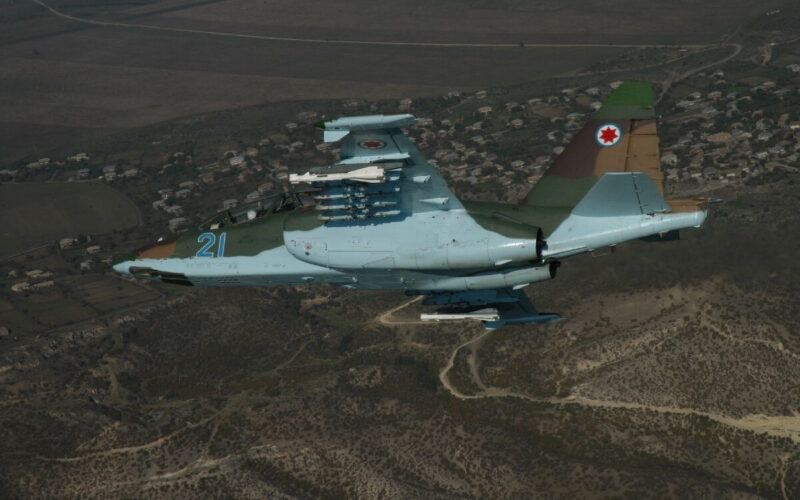The Georgian Minister of Defense Irakli Gharibashvili announced his desire to relaunch the production of the Sukhoi Su-25 “Frogfoot” ground attack aircraft in the country, using the capacities of the Tbilisi Aircraft Manufacturing group.
The Sukhoi Su-25 “Frogfoot” is a rustic single-seater ground attack aircraft specifically suited for close support. Sporting a 30 mm GSh-30-2 gun, it exists in a lot of different versions, some that can transport up to 6,400 kilograms of ordnance. In many regards, it is the Russian counterpart of the American A-10 Thunderbolt.
The aircraft was designed by the JSC Sukhoi Company in the 1970s. After a long development, it made its first flight in 1976 and entered service 4 years later. It is to this day an important component of the Russian Aerospace Forces with almost 200 aircraft still operating. Throughout the years, it has been updated, with its latest SM3 standard dating back to 2016.
During the Cold War, the production of the aircraft had been entrusted to the Tbilisi Aircraft Manufacturing group based in Georgia, then part of the Soviet Union.
Following the fall of the USSR, Russia moved the production plant to its soil, while the Georgian Air Force kept operating a contingent of Su-25 aircraft, which are the backbone of its fleet. With the Tbilisi Aircraft Manufacturing still operating and in possession of the plans, it appears that the Georgian military wants to restart production.
While the main objective would be to reinforce the existing fleet of 10 aircraft within the Georgian Air Force, the export of the aircraft was not ruled out. “We have absolutely all the resources – technical, intellectual and human – to produce and sell Su-25s with our own means,” Georgian Minister of Defense Irakli Gharibashvili said on the TV channel Palitranius.
And the demand may exist. The Su-25 is still a popular platform, with close to 500 aircraft being flown by over 24 air forces around the world. However, the technical capacity of the Tbilisi Aircraft Manufacturing remains dubious. The factory was bombed during the conflict with Russia in 2008, and projects to develop either an indigenous variant (Ge-31 “Bora”) or a NATO version conjointly with Israel (Su-25 “Scorpion”) are at a stalemate.

